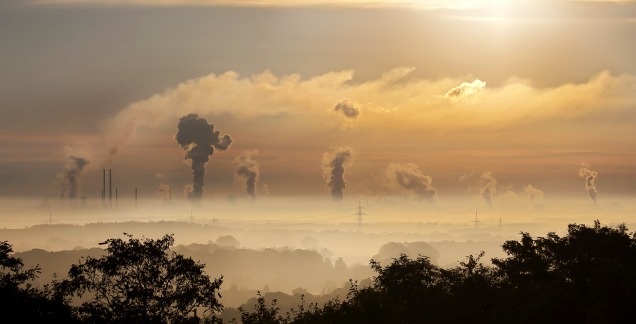 Green bonds seem to be all the rage these days. January 2019 saw a record number issued, yet again drawing investor attention to this niche but growing asset class. According to an SEB report, green bond issuance rose to US$ 17.2bn in January this year, a 17% YoY increase. From its inception in 2007, with the issuance of the first green bond by the European Investment Bank, this market has grown to a record annual issuance of US$ 183bn in 2018.
Green bonds seem to be all the rage these days. January 2019 saw a record number issued, yet again drawing investor attention to this niche but growing asset class. According to an SEB report, green bond issuance rose to US$ 17.2bn in January this year, a 17% YoY increase. From its inception in 2007, with the issuance of the first green bond by the European Investment Bank, this market has grown to a record annual issuance of US$ 183bn in 2018.
With the term green bond now cropping up on a regular basis, this post will explore what actually is a green bond and what are the qualification criteria. It will also consider the growth potential of this asset class.
The simplest definition of a green bond is a bond whose proceeds are used to finance projects with positive environmental or climate benefits. Most green bonds are classified as “use of proceeds” or asset-linked bonds. This means that while the proceeds of such bonds are earmarked for green project, the bonds are backed by the issuer’s whole balance sheet. Green bonds have been issued by a whole range of players, from corporates to municipalities to supranational organisations. For example, 2019 has seen the telecoms industry entering the green bond market for the first time with issuances by both Telefonica (EUR 1bn) and Verizon (US$ 1bn).
With growing investor demand in green bonds, there is also a growing concern about greenwashing and the need for stricter standards, assurance and certification of genuine green bonds. The Climate Bonds Initiative, an international investor-focused not-for-profit, has established the Climate Bonds Standard and Certification Scheme, a FairTrade-like labelling scheme for bonds to enable investors to assess the green integrity of bonds. The Standard is backed by the Climate Bonds Standard Board of investor representatives which between them represent US$ 34tn of assets under management. The Standard consists of a certification process, pre-issuance requirements, post-issuance requirements and a number of sector-specific eligibility and guidance documents. Sector guidance is currently available for water infrastructure, solar, wind, low carbon buildings, geothermal energy, marine renewable energy and low carbon transport. Guidance for forestry, bioenergy and land use is awaiting final adoption by the board. However, although it is widely agreed that such objective standards are crucial to ensure the future growth and development of the green bond market, adhering to these standards imposes a high cost on issuers and may therefore hinder their entry onto the market.
These cost hurdles and the fact that the green bond market still represents only 2% of global fixed income issuance, leads some to question whether the green bond market will ever succeed in going mainstream. Indeed, it may be that the main role for the green bond market going forward is to encourage a higher level of transparency and ESG (environmental, social and governance) disclosure for all issued bonds. For example, a standard form ESG scorecard could be required for every bond issued, enabling investors to form a clearer idea about the ESG impact of their investment. A requirement to have such standardised ESG disclosures would have a profound effect on the way bond issuers address ESG issues, making them an integral part of the issuer’s strategy.
From its humble beginnings a decade ago, the green bond market has grown into a established, albeit niche asset class. It is likely that annual issuances of green bonds will continue to grow as new issuers experiment with green bonds and unlock alternative sources of finance for environmentally green projects. However, it also seems likely that the green bond market will have an increasingly more powerful role to play in holding the mainstream bond market to account on ESG matters by encouraging stricter transparency and ESG disclosures. The green bond market may be small, but it sure is mighty.
 Having spent this summer interning at
Having spent this summer interning at  A lot it would seem, if you’re a large oil and gas company repositioning yourself as a low-carbon committed energy company. So, on 15 March,
A lot it would seem, if you’re a large oil and gas company repositioning yourself as a low-carbon committed energy company. So, on 15 March, 
 2017 was a year when sustainability, climate change and emissions reductions came to the fore on both private and public agendas. And so as we tumble towards 2018, I would like to do a run-down of the year’s developments that are helping to sustain a future.
2017 was a year when sustainability, climate change and emissions reductions came to the fore on both private and public agendas. And so as we tumble towards 2018, I would like to do a run-down of the year’s developments that are helping to sustain a future. Last week, the latest UN Climate Change Conference was held in Bonn, Germany. It was the first such conference to take place since the US’s withdrawal from the Paris Agreement and with Syria becoming a signatory during the conference, the US is now the only country in the world not to be a party to the agreement.
Last week, the latest UN Climate Change Conference was held in Bonn, Germany. It was the first such conference to take place since the US’s withdrawal from the Paris Agreement and with Syria becoming a signatory during the conference, the US is now the only country in the world not to be a party to the agreement.
 This weekend your blogger went along to the inaugural
This weekend your blogger went along to the inaugural 
